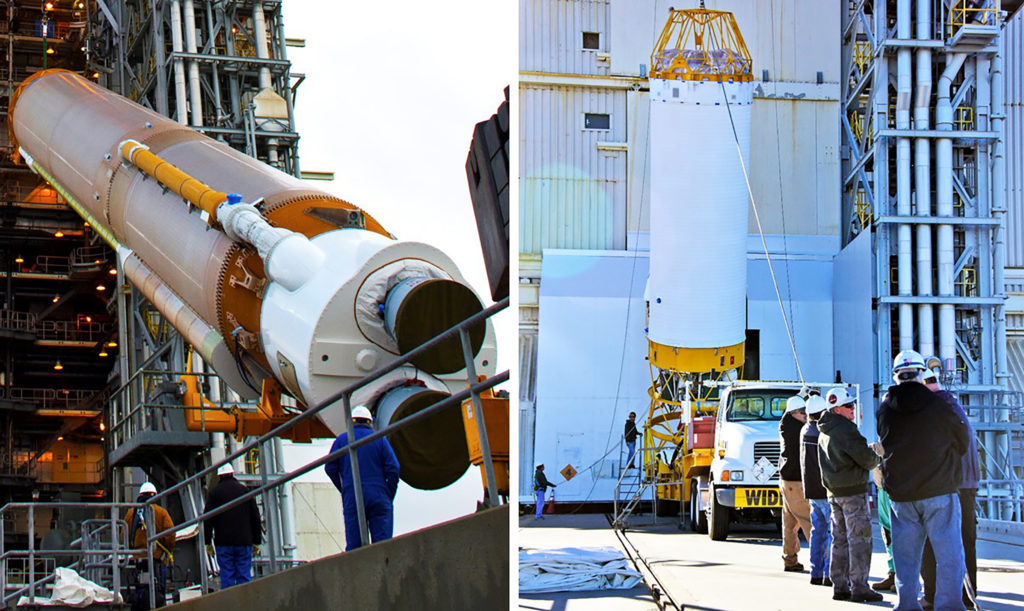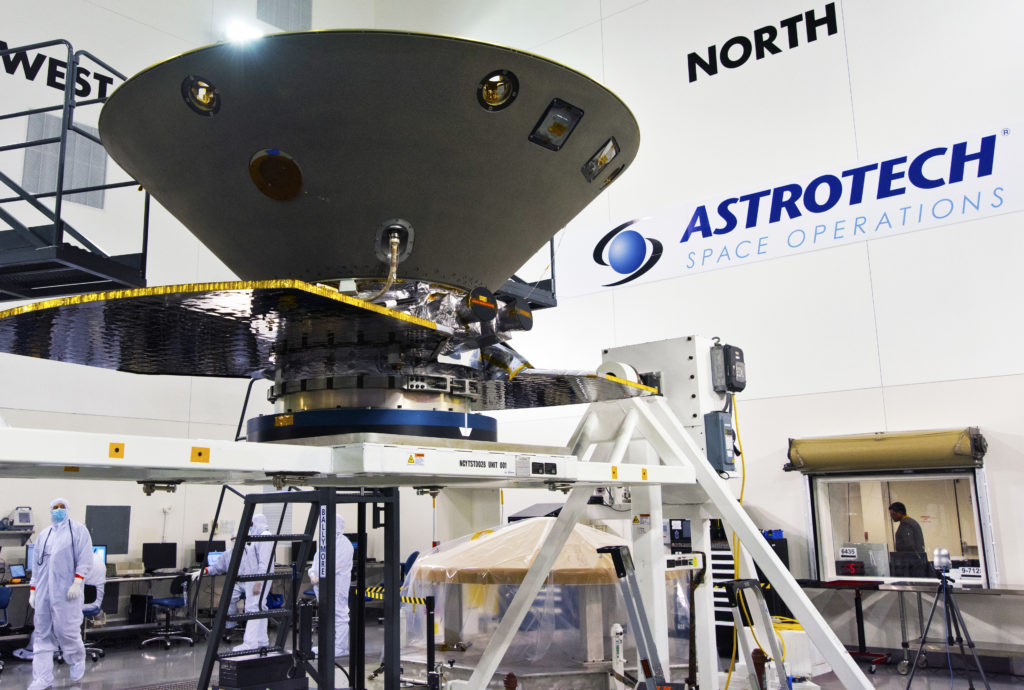 At Vandenberg Air Force Base in California, the United Launch Alliance Atlas V booster and Centaur upper stage are lifted for positioning on the launch pad at Space Launch Complex 3. The rocket will launch NASA’s Interior Exploration using Seismic Investigations, Geodesy and Heat Transport, or InSight, spacecraft for its trip to Mars.
At Vandenberg Air Force Base in California, the United Launch Alliance Atlas V booster and Centaur upper stage are lifted for positioning on the launch pad at Space Launch Complex 3. The rocket will launch NASA’s Interior Exploration using Seismic Investigations, Geodesy and Heat Transport, or InSight, spacecraft for its trip to Mars.
While processing of the InSight spacecraft continues in the Astrotech facility at Vandenberg, the Atlas V booster was transported to the launch pad on March 3, 2018 (photo on the left). Three days later, technicians and engineers assisted as the Centaur upper stage was mated atop the Atlas V (photo on the right).
On March 8, the boattail fairing was mated atop the Centaur. The boattail is an adaptor providing an interface between the Centaur and the payload fairing encapsulating InSight. Once encapsulated in its payload faring, InSight will be transported to the launch pad and mounted atop the Atlas V. Liftoff is scheduled for May 5, 2018.
InSight will be the first mission to look deep beneath the Martian surface. It will study the planet’s interior by measuring its heat output and listening for marsquakes. InSight will use the seismic waves generated by marsquakes to develop a map of the planet’s deep interior. The resulting insight into Mars’ formation will provide a better understanding of how other rocky planets, including Earth, were created.
NASA’s Jet Propulsion Laboratory in Pasadena, California, manages the InSight mission for the agency’s Science Mission Directorate. InSight is part of NASA’s Discovery Program, managed by its Marshall Space Flight Center in Huntsville, Alabama. The spacecraft, including cruise stage and lander, was built and tested by Lockheed Martin Space in Denver. Several European partners, including France’s space agency, the Centre National d’Étude Spatiales, and the German Aerospace Center, are supporting the mission. United Launch Alliance of Centennial, Colorado, is providing the Atlas V launch service. NASA’s Launch Services Program, based at its Kennedy Space Center in Florida, is responsible for launch management.
Atlas booster photo credit: NASA/Randy Beaudoin
Centaur lift photo credit: USAF 30th Space Wing/Arron Taubman

 Inside the Astrotech processing facility at Vandenberg Air Force Base in California, NASA’s Interior Exploration using Seismic Investigations, Geodesy and Heat Transport, or InSight, spacecraft has been mounted on to a rotation fixture for testing. InSight is scheduled to launch May 5, atop a United Launch Alliance Atlas V rocket for its trip to Mars.
Inside the Astrotech processing facility at Vandenberg Air Force Base in California, NASA’s Interior Exploration using Seismic Investigations, Geodesy and Heat Transport, or InSight, spacecraft has been mounted on to a rotation fixture for testing. InSight is scheduled to launch May 5, atop a United Launch Alliance Atlas V rocket for its trip to Mars.